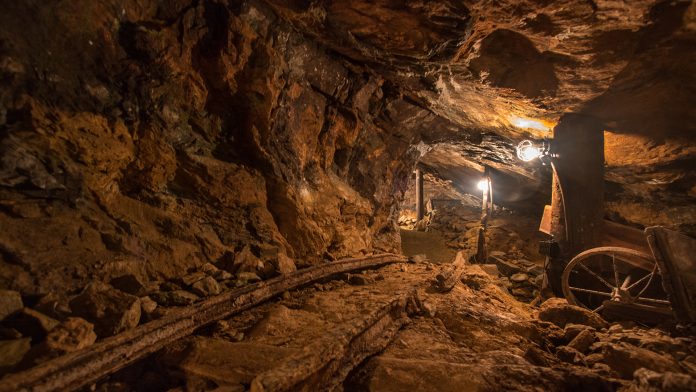Québec contains a large amount of various critical minerals including battery metals – the MRNF lays out how its legislation and future plans will capitalise on this.
As the world seeks to transition to cleaner, more sustainable energy in all industries, the need for materials to support this grows and grows. The Canadian Province of Québec sits atop a large amount of various critical minerals, including many battery metals.
The Québec Department of Natural Resources and Forests (MRNF) details its role in the supply chain and the plans for the future.
What are the key battery metals found in Québec, and what role does Québec play in the global supply chain of battery metals?
Québec has everything it needs to produce the cleanest battery in North America. By combining its available natural resources and state-of-the-art know-how, it has the advantages needed to stand out at every stage of the battery supply chain. In particular, Québec benefits from:
• A mineral-rich subsoil;
• Clean, renewable electricity;
• Highly qualified manpower;
• A favourable geographic location;
• A vibrant industrial ecosystem;
• A research network for critical and strategic minerals (CSM); and
• Environmental assets.
Québec already stands out as a major North American producer of critical and strategic minerals (CSM) essential for battery manufacturing. It operates nickel, graphite, iron, and lithium mines. Some mines produce copper and cobalt as by-products.
Québec owns more than 50% of spodumene (lithium) mining projects in Canada and several graphite and rare earth projects. Phosphate projects could also be used to manufacture LFP batteries in the territory.
In addition, Québec operates the largest number of CSM metallurgical plants in Canada. Among CSMs for batteries, copper is notably processed in Québec. There are also many processing projects for lithium, graphite, and rare earths.
The government’s battery strategy has led to several announcements of projects to manufacture cathodes and battery cells for electric vehicles that can be powered in whole or in part by Québec minerals.
In the current context of redefining global supply chains, Québec is also seeking to position itself as a reliable, ethical, and sustainable mineral supplier in the battery value chains in North America and elsewhere in the world.
Can you detail how the Ministry is fostering innovation in the battery metals sector? How is the Ministry supporting the development of new technologies?
Innovation in the mining sector has been part of the Department’s vision for a long time. Québec was one of the first jurisdictions to develop a plan to address CSM potential. The Québec Plan for the Development of Critical and Strategic Minerals (QPDCSM) was launched on 29 October 2020.1
It includes the list of CSMs recognised by the province of Québec and all essential minerals for battery manufacturing. This list is updated every three years, and the new version was made public on 23 January 2024.
The QPDCSM’s objectives include stimulating innovation and research. These aspects are percolating in several principles.
Among the QPDCSM’s achievements to date is the establishment of the CSM-specific research network, which was launched in February 2023. Co-ordination of this network was entrusted to the Consortium de recherche et d’innovation en transformation métallique (CRITM)2, one of nine industrial research groupings (RSRI) in Québec.
The CRITM aims to stimulate industrial research, support companies in carrying out their research projects, and provide them with financial support, making them a partner of choice.
Since the CRITM does not carry out any research work, it facilitates this inclusive network of companies, researchers, and other stakeholders in the mining sector while remaining independent about the project choices and the researchers who will carry them out.
In parallel, the government announced funding for two concurrent research and development (R&D) support programmes:3
• The research and development support programme for the extraction, processing, and recycling of CSMs. This programme has been entrusted to the CRITM so that it can be deployed in synergy with the research network.
• The research and development support programme for the circular economy applied to the CSM sectors. This programme will be implemented by another RSRI, PRIMA Québec4, the advanced materials research and innovation hub in Québec.
Both programmes have received close to CAD$6m in funding since their launch.
The ministère des Ressources naturelles et des Forêts (MRNF) also announced the deployment of the Support Program for Mineral Scale-up or Primary Processing for Critical and Strategic Minerals (CSM) in April 2023. This programme provides financial support for semi-continuous pilotage projects or demonstration plants involving MCS.
The goal of the programme is to increase the chances of project success and reduce the associated technical and financial risks. In addition to encouraging innovation through the creation of new processes or improvements to existing ones, this initiative will accelerate the realisation of mineral processing in Québec and contribute to the development of the sectors necessary for the energy transition, including renewable energy and
battery manufacturing.
The Department also supports, through the QPDCSM, initiatives of Groupe MISA,5 the provincial centre of excellence for mining innovation.
What initiatives has the Ministry undertaken to support the exploration and production of battery metals in Québec?
The acquisition of new geoscientific knowledge throughout the territory is a key element of mining development in Québec and of the QPDCSM. With this in mind, the government invests more than $18m annually in the acquisition, processing, and dissemination of geological data. This knowledge is showcased and freely available through the SIGÉOM (Québec Geomining Information System) database,6 which contains geoscientific information collected for more than 150 years by the mining industry, by the Ministère des Ressources naturelles et des Forêts (MRNF) and its partners.
An internet portal with an interactive map7 provides free access to the geoscientific database, considered one of the most comprehensive in the world. Areas suitable for exploration and discoveries from the MNRF’s annual work are published on the Internet and detailed through the Bulletins géologiques.8
The Department also supports CSM exploration innovation through applied research conducted by the Consortium de recherche en exploration minérale (CONSOREM)9 and the Mineral Exploration Support Program for CSMs.10
The Department is also working closely with various partners to implement the QPDCSM to support the exploration and production of critical minerals. These partners include public corporations and other government departments that support exploration and mining activities and proponents. These partners include:
• Investissement Québec;
• Société du Plan Nord;
• SOQUEM; and
• Société de développement de la Baie-James (SDBJ).
Investissement Québec is the government’s financial arm. It has various business units and subsidiaries, including Ressources Québec. The latter is the entry point for businesses wishing to invest in the natural resources and energy sectors. It supports businesses throughout their projects for exploration, mining, or processing of natural resources and offers the full range of financial products to support them.
SOQUEM (Société québécoise d’exploration minière) is another subsidiary of Investissement Québec, whose mission is to promote the exploration, discovery and development of Québec’s mineral resources. It has participated in and contributed to the startup of hundreds of projects that led to major discoveries, including lithium and rare earths projects.
The Société du Plan Nord is a government corporation with the mission to contribute to the integrated and coherent development of northern Québec in concert with the representatives of the regions and the Indigenous Nations concerned, as well as the private sector. It plays a major role in supporting the communities, businesses and organisations that carry out projects in the territory, while also working to facilitate access to the northern territory.
The SDBJ aims to promote, from a sustainable development perspective, economic development, improvement, and exploitation of natural resources of the James Bay region other than the hydroelectric resources within Hydro-Québec’s mandate. It may generate, support, and participate in projects in the pursuit of those objectives.

Furthermore, Québec offers one of the best business climates for mining investment. Québec’s regime includes various measures to support companies in different phases of the mining cycle.
In addition, the mining regime aims to facilitate the local processing and transformation of extracted mineral commodities.
How does Québec’s battery metals industry contribute to the Province’s green energy transition?
The industry contributes to the electrification of transportation by powering the battery system for transportation, but also a whole related ecosystem that includes companies active in the manufacture of electric buses or in battery recycling.
Minerals for batteries, such as copper, nickel, and graphite, are also used in other applications necessary for the energy transition, such as equipment related to the production of renewable energy (solar, wind) or electrical wires.
The industry’s contribution is also made through efforts to carry out mining operations in a responsible manner by minimising negative impacts and maximising benefits both at the environmental and social levels. This is done by integrating the principles of electrification, optimisation, reduction, and circular economy into the development of mining projects and operations.
What are the Ministry’s plans to mitigate the environmental impact of battery metal mining?
The circular economy remains an important element of the QPDCSM. The MRNF aims to maximise the use of mine tailings and has begun work in collaboration with the Unité de recherche et de service en technologie minérale (URSTM) to develop a methodology for characterising the CSM potential of the unrestored tailings management facilities under the responsibility of the State. Other circular economy initiatives will also be implemented in the coming months.
In addition, the QPDCSM seeks to support energy efficiency and renewable energy supply for CSM development and valorisation projects.
It should also be noted that, in Québec, environmental standards for the mining sector are among the strictest in the world.
The Department also encourages companies to meet the highest ESG standards. The Sustainable Development Support Program for Mining Companies provides financial support to exploration companies seeking ECOLOGO certification and to mining companies wishing to comply with the principles of the TSM (Towards Sustainable Mining).
In order to promote the respect of environmental standards and other ESG criteria by Québec producers to customers and consumers, the Department is also supporting traceability initiatives to track several ESG indicators across the battery metal value chain.
Last April, the MRNF began a participatory process aimed at determining the winning conditions, particularly to ensure that environmental issues are taken into account for a harmonious development of mining activities in Québec. It reflects the government’s will to listen to the population and find solutions by seeking their input.
The general public, regional stakeholders, Indigenous nations and several national groups were invited to participate in various ways between 24 April and 31 May through exchange workshops, a web-based platform including online questionnaires and submission, a virtual consultation workshop with Indigenous communities, a day-long consultation workshop with national stakeholders as well as virtual workshops to exchange information with the public and local stakeholders.
More than 2,500 interventions were identified during this process, which will help guide government actions to be implemented to promote the harmonious development of Québec’s mining activities. The resulting action plan is expected to be released in the first half of 2024.
How is the Ministry addressing the challenges faced by the battery metals industry in Québec?
The Department, in collaboration with its partners, has put in place a number of programmes to accelerate the implementation of projects as much as possible while respecting the highest ESG standards.
In order to reduce transformation risks, the implementation of the Support Program for the Scale-up of Mineral or Primary Processing Processes for Critical and Strategic Minerals (CSM) encourages companies to develop their processes according to the rules, which avoids costly errors that may subsequently occur.
The Department, in collaboration with its government partners, has also implemented initiatives to reduce project approval times without compromising environmental requirements.
Capital attraction also remains an issue. The QPDCSM is, therefore, also intended to promote CSM projects to foreign investors. The government mining promotion team, which includes the MRNF, the Société du Plan Nord, Investissement Québec, SOQUEM and the Ministère des Relations internationales et de la Francophonie, is continuing its international promotion activities.
In recent years, it has made presentations on the QPDCSM and Québec’s mineral potential at a number of provincial, national and international events. The government team’s participation in these events also helped promote Québec’s potential to new international, private and institutional investors.
How is the Ministry planning to balance the economic benefits of battery metal mining with the preservation of Québec’s natural landscapes?
Obligations to restore mining sites are included in the law. The Department’s approach to promoting the harmonious development of the mining sector considers the concerns raised by stakeholders, particularly concerning the preservation of Québec’s natural environments and landscapes.
A legal mechanism exists for the designation by municipalities of territories incompatible with mining activities.

The MRNF is also involved with other government departments in thinking about the designation of protected areas and conservation areas in the province.
What is the Ministry’s vision for the future of the battery metals industry in Québec?
The vision resulting from the QPDCSM is that Québec be recognised as a reliable, ethical and sustainable partner that actively contributes to global energy and technological transitions and to the creation of wealth in a greener economy through the production, transformation and recycling of quality CSMs.
The Department is also working with partner departments and government corporations to ensure maximum integration and collaboration between the mining sector and the downstream portion of the battery value chain that is developing in Québec.
References
- Plan québécois pour la valorisation des minéraux critiques et stratégiques 2020-2025 (Quebec.ca)
- CRITM – Votre partenaire indispensable en transformation métallique
- Programmes – Ministère des Ressources naturelles et des Forêts (gouv.qc.ca)
- PRIMA Québec | R-D et financement | Les matériaux pour advancer
- Accueil | Groupe MISA (legroupemisa.com)
- SIGÉOM | Système d’information géominière | Home (gouv.qc.ca)
- SIGÉOM | Système d’information géominière | Carte interactive (gouv.qc.ca)
- Bulletins géologiques – en – Géologie Québec (gouv.qc.ca)
- CONSOREM | Consortium de recherche en exploration minérale
- Programmes – Ministère des Ressources naturelles et des Forêts (gouv.qc.ca)
Please note, this article will also appear in the seventeenth edition of our quarterly publication.









